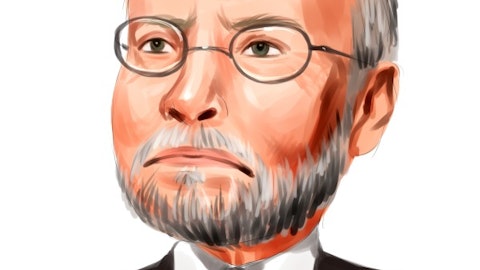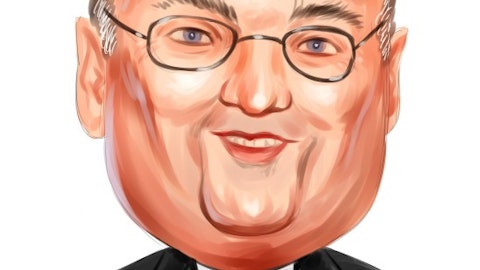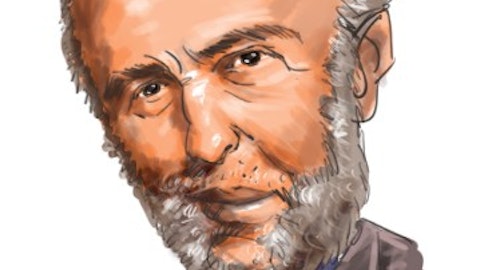In 1982, Jim Simons founded Renaissance Technologies, a hedge fund based in New York’s Long Island. Simons believes in the potential of technical trading models. He employs a scientific approach to trading and hires like minds. According to Simons, RenTech does not hire people from Wall Street or Business Schools. Instead, they hire people who have done good science. Those who want to work for Simons do not have to know any finance, but they are required to make a presentation about their scientific research to the entire company.

Simons stepped down from day-to-day management of the firm two years ago, but he is still the chairman of RenTech. Recently, RenTech reported its latest 13F holdings to SEC. We are going to take a closer look at the dividend stock picks of the fund and decide whether they are good investments. Why do we care about RenTech’s quantitative stock picks? Because they have an amazing track record. Last year RenTech’s RIEF fund returned 34%.
Eli Lilly & Co (LLY): LLY is the largest dividend position and the second-largest position in Simons’ latest portfolio. The biggest position is Apple Inc (AAPL). Simons boosted his LLY stakes by 2% over the fourth quarter last year. At the end of 2011, RenTech reported owning over $300 million worth of LLY shares. We have already discussed LLY in detail in a previous article, so we will move on to RenTech’s next largest position.
Bristol-Myers Squibb Company (BMY): Like LLY, BMY is also a high dividend healthcare stock. It has a dividend yield of 4.17%. Simons boosted his BMY stakes by about 14% over the fourth quarter last year. At the end of 2011, RenTech had $226 million invested in this stock. Besides Simons, a few other hedge fund managers were also bullish about BMY. Cliff Asness’ AQR Capital Management had $37 million invested in BMY at the end of last year. However, we are not very bullish about BMY. The stock seems to be a bit overpriced. BMY has a forward P/E ratio of 16.83, versus 16.04 for its peers. LLY looks much more attractive as its forward P/E ratio is only 10.7. Moreover, BMY’s earnings are expected to grow at only 1% annually over the next few years and its payout ratio is above 60%. We are not very optimistic about its dividend growth in the future because of its relatively high payout ratio, high P/E ratio, and slow growth rate. In fact, the company has slightly increased its dividend payouts over the past decade. It has been paying a quarterly dividend of $0.28 per share from 2001 to 2007. It increased its dividend to $0.31 per share in 2008 and its most recent quarter dividend is $0.34 per share.
Lorillard Inc (LO): Another large dividend position in Simons’ latest portfolio is LO. At the end of last year, Simons also had over $200 million invested in this stock. Together with RenTech, twenty-three hedge funds disclosed owning LO in their 13F portfolios at the end of the third quarter. Jean-Marie Eveillard’s First Eagle Investment Management also had over $200 million invested in LO. Cliff Asness and Joel Greenblatt were also bullish about this stock.
We think LO is a good option for dividend lovers. It has a dividend yield of 4.81%, more than doubling the yield of 10-year Treasury bonds. As long as it does not lose over 25% in the next ten years, it will not underperform the government bonds. Additionally, LO has an impressive record of growing earnings and revenue, expanding profit margins, and reasonable valuation levels. For the fourth quarter of 2011, LO reported net income of $310 million, or $2.32 per share, compared with $259 million, or $1.74 per share for the same quarter in 2010. The company’s current gross profit margin of 56.8% and net profit margin of 27.6% are both above the industry average. One of the main competitors of LO is Reynolds American Inc (RAI), which also has a decent dividend yield of 5.5%. LO has a low forward P/E ratio of 13 and its EPS is expected to grow at an average of 11.43% per year in the next five years. This means that its P/E ratio for 2014 is 10.46, versus 11.1 for RAI.
Another big dividend position in Simons’ latest portfolio is Philip Morris International Inc (PM). We like PM a lot. We think it is a better investment than any of the domestic tobacco companies. Its forward P/E ratio and expected growth rate are both almost the same as those of LO. The company also recently boosted its dividend payment by about 20%. Though its current payout ratio of 58% is a bit high, we expect the payout ratio to decline soon as its earnings are expected to grow at over 10% per year. We also like that the stock is a hedge against a decline in the value of US dollar. PM has been the largest position in our portfolio for the past two years.





